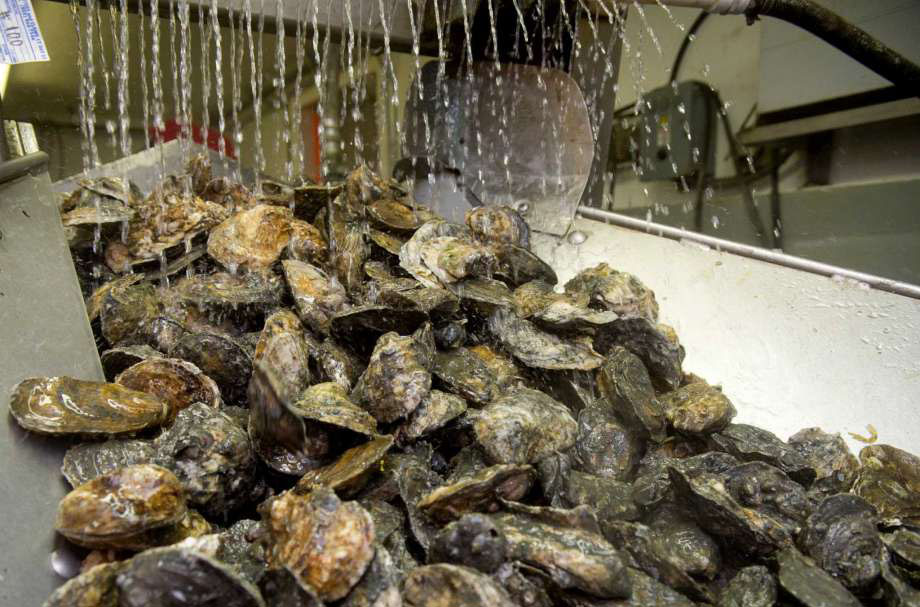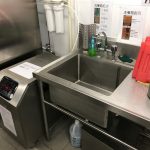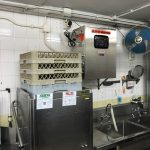 Today people are increasingly conscious of poor hygiene standard outside of their home and potential implications this has to their health. Hotel and restaurant experience high levels of guest turnover and seasonal busy periods. It is important to ensure optimal hygiene services levels in all area are cleaned effectively and hygienically to reflect the image of your establishment. A high level of kitchen food handling and critical control point hygiene within your restaurant will help portray the right image to your guests and leave them feeling valued.
Today people are increasingly conscious of poor hygiene standard outside of their home and potential implications this has to their health. Hotel and restaurant experience high levels of guest turnover and seasonal busy periods. It is important to ensure optimal hygiene services levels in all area are cleaned effectively and hygienically to reflect the image of your establishment. A high level of kitchen food handling and critical control point hygiene within your restaurant will help portray the right image to your guests and leave them feeling valued.
Food hygiene training is an important factor in F&B. Increase the hygiene level of safe food handling is an important factor for effective management of food safety especially the raw food such as oyster, sashimi, salary or other high risk foods.
In late 2013 two clusters of food poisoning involving 49 person who had dined in Happy Valley were reported to the Hong Kong Centre for Food Safety. The predominant symptoms among the victims were vomiting and diarrhoea which appeared about 40 hours after the meal. Finding of epidemiological investigation suggested that the food poisoning was caused by consumption of norovirus contaminated raw oysters. Among the different disease causing viruses found in oysters, norovirus in oysters is well know to cause food borne disease outbreaks worldwide, making raw oysters a high risk food item. Oysters are inherently riskier than other seafood because their feed by filtering large volumes of seawater from their surrounding environment and viruses or bacteria can accumulate in oysters by uncertainty marine condition.

Hand washing is the single most important way to prevent the spread of infection in kitchen. Germs spread very easily between out hands and food, so having a clean pair of hand before engaging in any food preparation or cooking is essential. Washing your hands properly when touching raw meat, after going to the toilet and after using the bin can significantly help to reduce the spread of harmful bacteria such as E.coli and salmonella. Wash hands can avoid moving germ from on place to other and keep people from getting sick. Hand hygiene is important in kitchen because the most common mode of transmission of pathogens is through the hands. Clean hygienic hands are the most important factor in preventing the spread of pathogens and reduce the infection incidence.
Recently, salads have become popular among consumers in Hong Kong. Many different styles of salads are commercially available in the market. In commercial setting, salads are either freshly prepared at restaurants or produced as pre-packaged food at food factories for supplies to retail outlets. Some restaurants have self-serve salad bars and food ingredients displayed there may be of additional risk of being contaminated by the patronizing customers.

The possible sources of pathogens in these products include the incoming raw vegetable themselves, the food handlers and the processing environment. When vegetables are chopped and shredded, the release of plant cellular fluids provides a nutritive medium in which microorganisms can grow. The high moisture content of fresh vegetables, the lack of lethal process to eliminate microbial pathogens and the potential for time and temperature abuse during preparation, distribution and handling further intensify the risk of food borne illness.
Raw eggs know to be a source of salmonella. This pathogen may be introduced into the final product if raw and unpasteurized eggs or egg products are used to prepare salad dressings. Salad preparation often involves handling of pre-cooked or ready to eat ingredients, good personal and environmental hygiene practices should be observed to minimize the chance of introduction of microbial hazards.
 In seafood processing, since ozone is a strong oxidizing agent that can effectively clean soil and biofilm from surfaces, it works well in seafood processing plants. With a half life measured in minutes, ozone must be generated as used. Is common to apply ozonated water in shellfish process, ozone provides better bacterial and viral elimination than chlorine, without leaving a taste in the shellfish meat. More and more oyster farms use ozonated water to clean the oyster of any pollutants and silt they may have absorbed in their natural environment before going to market. Freshly collected oysters are shucked and put in tanks through which several changes of ozonated water are run to cleanse the animals. The residual ozone in the water completely prevents the growth of bacteria and organisms in the water-packed jars. The water is left clean and transparent during shipment and storage at restaurants and stores.
In seafood processing, since ozone is a strong oxidizing agent that can effectively clean soil and biofilm from surfaces, it works well in seafood processing plants. With a half life measured in minutes, ozone must be generated as used. Is common to apply ozonated water in shellfish process, ozone provides better bacterial and viral elimination than chlorine, without leaving a taste in the shellfish meat. More and more oyster farms use ozonated water to clean the oyster of any pollutants and silt they may have absorbed in their natural environment before going to market. Freshly collected oysters are shucked and put in tanks through which several changes of ozonated water are run to cleanse the animals. The residual ozone in the water completely prevents the growth of bacteria and organisms in the water-packed jars. The water is left clean and transparent during shipment and storage at restaurants and stores.
Fish processing apply ozonated water to preservation of fresh fish is not new. Fish could be extended at least 30% by storage under ice made from ozonated water. The ozone sterilized the water, so that when the ice melted, the liquid water did not contain bacteria. In this manner, bacterial growth on fish surfaces was kept minimal.
Trout and salmon fillets were inoculated with Listeria monocytogenes, a bacterium often found in soil and water that can cause serious illness. After treatments using different exposure times and concentration of ozonated water were analyzed, preliminary results showed that ozone was effective for surface decontamination.

Ozone is a USFDA and USDA approved food contact sanitizing agent and has been used in the seafood industry in dissolved forms to destroy bacteria. There is a advantages of apply ozonated water for kitchen processing equipment sanitize, ozone controls pathogens on the surface of food processing equipment and machinery (after oil remove), and prevents their spreading into the food product. Ozonated water can also be apply for sanitizing walls, floors, and other areas in processing plants. In addition, ozone is a very safe product, which in over 100 years of use has never been involved in a fatal accident. Compared to chlorine, which forms many toxic by products, ozone forms none. Its varied benefits will likely lead to further use of ozone by seafood processors in the near future.
Hand hygiene is important in kitchen and food factory because the most common mode of transmission of pathogens is through hand. Clean hygienic hands are the most important factor in preventing the spread of pathogens and reduce the incidence. Hand washing physically removes particulates, soil, organic material, and reduce microbial contamination by local environment. Rising water alone cannot remove all contaminants such as oil, fats and microorganisms, thus hand wash request use detergents for dissolve those materials, but hand washing with soap is only partially effective in fat s and oil. Ozonated water is become more popular for sanitizing as it may substantially reduce residual contaminants on the skin. Ozone has a very characteristic odor and is powerful oxidant. Biosure ozonated water is produced using an patent electrical device and created on demand using an electrolytic ozone generator located proximate to the faucet.

Chlorine is commonly used in the fresh fruit and vegetable industry to improve microbiological quality and control pathogens. However, many research studies have indicated that it is limited in its ability to kill bacteria on fruit and vegetable surfaces. Environmental and health organizations have expressed concerns with tradition sanitizing agents with respect to the formation of by product, such as trihalomethanes (THMs) and other chemical residues formed in the waster water returned to the environment. These chemical residues may react with pesticides to form chemical by products. These residues ultimately will be consumed by customers and may directly and indirectly affect public health.
Ozone kills bacteria such as Escherichia coli, Listeria, and other food pathogens much faster than traditionally used disinfectants, such as chlorine, and is free of chemical residues. Ozone half life in water at room temperature is only few min and it decomposes into simple oxygen with no safety concerns about consumption of residual ozone in the treated food product. Ozone can also destroy pesticides and chemical residues, such as chlorinated by products.
Nowadays, fruits and vegetables we get contains traces of pesticides and other harmful chemicals higher than desired levels. So the rate of related diseases and causalities are much higher in our society. Ozonated water is effective against various kinds of microorganisms on fruits and vegetables. Promising results have been revealed in solving the problems of the food industry like mycotoxin and pesticide residues by apply ozone.
| Catalogue | Download PDF |
| Catalogue 2 | Download PDF |





























